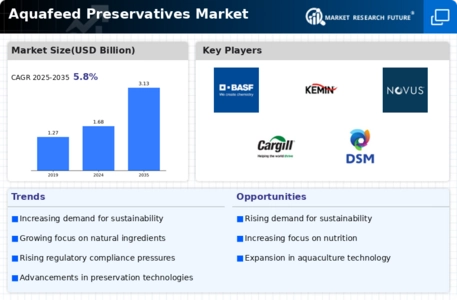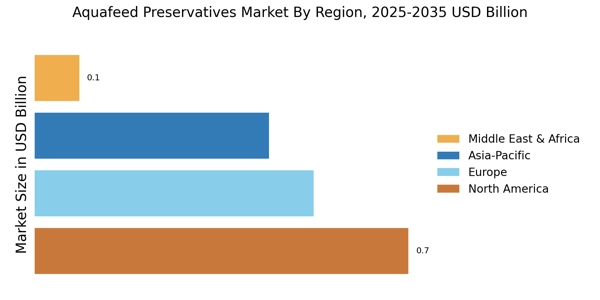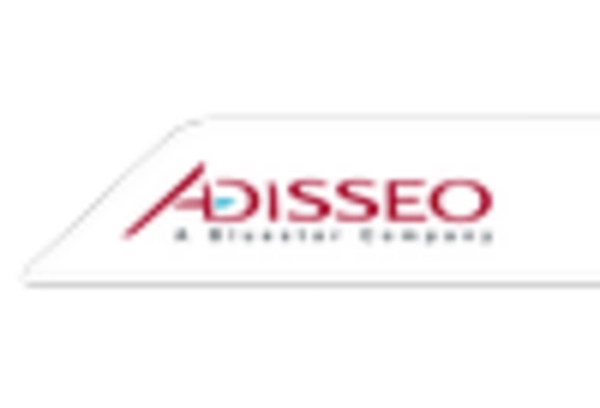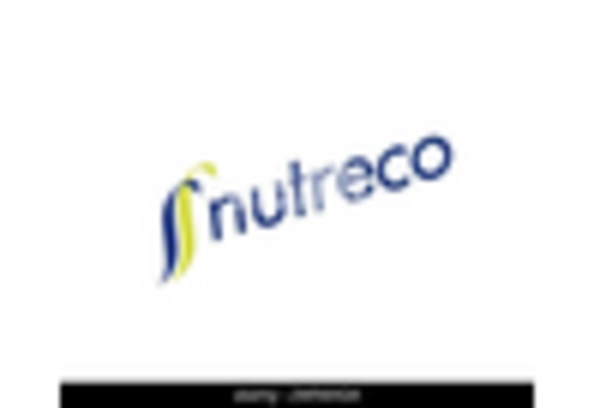The Aquafeed Preservatives Market is currently characterized by a dynamic competitive landscape, driven by increasing demand for sustainable aquaculture practices and the need for enhanced feed quality. Key players such as BASF SE (Germany), Cargill, Incorporated (US), and Kemin Industries, Inc. (US) are strategically positioning themselves through innovation and partnerships. BASF SE (Germany) focuses on developing advanced preservative solutions that enhance feed stability and nutritional value, while Cargill, Incorporated (US) emphasizes regional expansion and local sourcing to optimize supply chains. Kemin Industries, Inc. (US) is also investing in digital transformation initiatives to improve product traceability and customer engagement, collectively shaping a competitive environment that prioritizes quality and sustainability.
The business tactics employed by these companies include localizing manufacturing and optimizing supply chains to enhance operational efficiency. The market appears moderately fragmented, with several players vying for market share. However, the collective influence of major companies is significant, as they drive innovation and set industry standards, thereby shaping the overall market structure.
In August 2025, Cargill, Incorporated (US) announced a partnership with a leading aquaculture research institute to develop new preservative formulations aimed at improving feed shelf life and reducing waste. This strategic move underscores Cargill's commitment to sustainability and innovation, positioning the company to meet the evolving needs of aquaculture producers.
In September 2025, Kemin Industries, Inc. (US) launched a new line of natural preservatives designed to enhance the nutritional profile of aquafeeds. This initiative reflects Kemin's focus on leveraging natural ingredients to meet consumer demand for cleaner label products, thereby strengthening its market position in the growing segment of organic aquafeed.
In July 2025, BASF SE (Germany) expanded its production capabilities in Asia by investing in a new facility dedicated to the production of aquafeed preservatives. This expansion not only enhances BASF's manufacturing capacity but also allows the company to better serve the rapidly growing Asian aquaculture market, indicating a strategic focus on regional growth and responsiveness to local market demands.
As of October 2025, current trends in the Aquafeed Preservatives Market include a strong emphasis on digitalization, sustainability, and the integration of artificial intelligence in product development. Strategic alliances among key players are increasingly shaping the competitive landscape, fostering innovation and collaboration. Looking ahead, it is likely that competitive differentiation will evolve, with a shift from price-based competition to a focus on innovation, technology, and supply chain reliability, as companies strive to meet the demands of a more discerning market.


















Leave a Comment